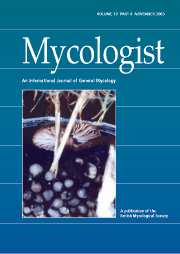No CrossRef data available.
Article contents
Candida albicans - a fungal Dr Jekyll and Mr Hyde
Published online by Cambridge University Press: 09 May 2002
Abstract
Twenty years ago a clinician could have been excused for being largely ignorant about fungi as disease causing agents. How things have changed! In the league table of serious infections in which microbes enter the bloodstream (septicaemia) and then challenge the functioning of the vital organs, the fungus Candida albicans (Robin) Berkhout has risen through the ranks of obscurity to rival some of the most common bacterial septicaemias (Calderone, 2002). It may not be appreciated that there are many more Candida infections and Candida-related deaths than there are, for example, cases of bacterial meningitis. In fact, there is a small group of Candida species that cause disease of which C. albicans is the most common and important. It is therefore right to know this yeast as fungal public enemy number one. If a doctor diagnoses a bacterial blood infection, in most cases a number of antibiotics can be used to treat the condition.
Information
- Type
- Original Article
- Information
- Copyright
- © 2002 Cambridge University Press

